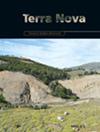The Fagradalsfjall and Sundhnúkur Fires of 2021–2024: A single magma reservoir under the Reykjanes Peninsula, Iceland?
IF 1.7
3区 地球科学
Q2 GEOSCIENCES, MULTIDISCIPLINARY
引用次数: 0
Abstract
The Reykjanes Peninsula (RP) hosts several volcanic lineaments that have been periodically active over the last 4000 years. Since 2021, following a ca. 800‐year quiescence, eight eruptions have occurred on the RP, with more expected in the future. To better understand the origins of this renewed volcanism and help forecast future eruptions, we examine (i) if the ongoing volcanism is fed from a single or multiple magma storage zone(s) or from several smaller reservoirs and; (ii) where the zone(s) are located (i.e. mantle or lower or upper crustal depths). Using major and trace element geochemistry, oxygen isotopes, and seismic tomography we rule out a single, RP‐scale, deep‐seated magma storage zone. Instead we propose the presence of a ca. 10‐km‐wide region of crustal‐level (9–12 km) magma accumulation beneath the Fagradalsfjall volcanic lineament that fed both the 2021–23 eruptions of the Fagradalsfjall Fires and the 2023–24 eruptions of the Sundhnúkur Fires.2021-2024 年的 Fagradalsfjall 大火和 Sundhnúkur 大火:冰岛雷克雅未克半岛下的单一岩浆库?
雷克雅未克半岛(RP)上有几条火山线,在过去的 4000 年里,这些火山线周期性地活跃着。自 2021 年以来,经过约 800 年的沉寂,雷克雅未克半岛已发生了八次火山爆发,预计未来还会有更多。为了更好地了解火山活动的起源并帮助预测未来的火山爆发,我们研究了(i)正在进行的火山活动是否来自一个或多个岩浆贮存区,或者来自几个较小的贮存区;(ii)岩浆贮存区的位置(即地幔或地壳下部或上部深度)。利用主要和痕量元素地球化学、氧同位素和地震层析成像技术,我们排除了单一的 RP 规模深层岩浆储集带的可能性。相反,我们认为在法格拉达尔斯菲亚尔火山线下存在一个约10千米宽的地壳级(9-12千米)岩浆积聚区,它为2021-23年法格拉达尔斯菲亚尔火山大火的喷发和2023-24年圣努库尔火山大火的喷发提供了岩浆。
本文章由计算机程序翻译,如有差异,请以英文原文为准。
求助全文
约1分钟内获得全文
求助全文
来源期刊

Terra Nova
地学-地球科学综合
CiteScore
4.80
自引率
8.30%
发文量
59
审稿时长
2.3 months
期刊介绍:
Terra Nova publishes short, innovative and provocative papers of interest to a wide readership and covering the broadest spectrum of the Solid Earth and Planetary Sciences. Terra Nova encompasses geology, geophysics and geochemistry, and extends to the fluid envelopes (atmosphere, ocean, environment) whenever coupling with the Solid Earth is involved.
 求助内容:
求助内容: 应助结果提醒方式:
应助结果提醒方式:


